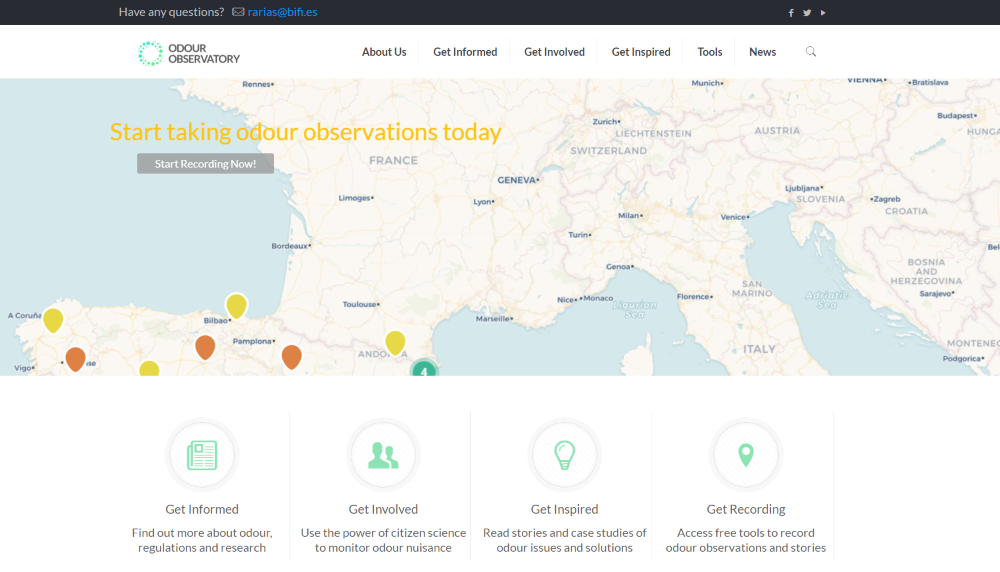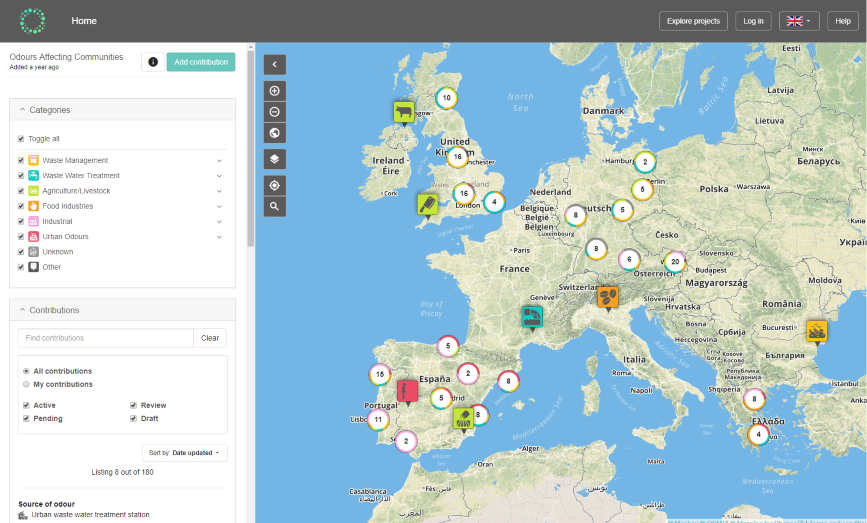Article written by Mari Carmen Ibáñez and Nora Salas Seoane, Ibercivis Foundation, Spain.
It is reproduced here with our thanks, translated to English from the original Spanish.
What does the world smell like?
The International Odour Observatory is the first observatory at a global level dedicated to providing access to odour related information. This is an initiative by D-NOSES, a citizen science project led by the Ibercivis foundation, with the goal to help communities who are affected by odour issues. The ultimate aim is to involve all stakeholders, including local authorities, odour-emitting industries, and odour experts in finding common sense solutions. The observatory includes information about odours, odour regulations, odour data collection, and possible mitigation strategies that can be used to improve the situation.
In the small town of Fantova, Laude Guardia notices a disagreeable smell. It is summer, and the high temperatures are causing the trash on the outskirts of town to create an odour pollution problem. Laude has the citizen science app OdourCollect on her phone which was made to record such incidents, and it takes her only a few seconds to add the data to the map. The app, the brain-child and creation of Rosa Arias (D-NOSES Project Coordinator), is the main tool to record odour issues of the D-NOSES project . OdourCollect creates maps of odours crowdsourced from communities who record the odours they encounter in their daily lives. Geolocalisation ensures a correct placement on the map, and the simple interface allows users to describe the odour quickly and accurately using scales for its intensity and hedonic tone (how agreeable the odour is).
Meanwhile, thousands of kilometers away in Chile, Pepe Rojas is living next to a company that collects and treats biological waste. He would like to know if there are any regulations in place for his area that could let him get relief from the continuous environmental odour emissions from the plant. Community Maps, also available through the odour observatory, creates maps that can be overlaid with useful information. This app, created by Mapping for Change in the UK, is being used to co-create a visual database of the existing regulations on odour pollution. This means that it is a map created by the voluntary contributions from communities, experts and anyone else who would like to add information to this open platform.
The aim of the Odour Observatory and its inventor, Rosa Arias, is to provide tools such OdourCollect and Community Maps to empower citizens to take an active role in maintaining the quality of their own environment and lives. Several studies have demonstrated that continuous exposure to odour pollution can have significant effects on people’s health, including headaches, stress and serious respiratory problems. Because of the lack of consistent regulation in this area, D-NOSES proposes to put odours on the map at a global level to improve the systems and methods for odour governance around the world.
The project is implementing its citizen science, bottom-up methodology in 10 different pilot case studies in Barcelona, Thessaloniki, Sofia, Porto, São João da Madeira as well as in Chile and Uganda. Everyone in the whole world can start contributing odour observations and help create an overview of the problem, as well as the necessary data to create pressure and get some action at a local level.
If you would like to know more about the D-NOSES project, and how the tools that have been developed can help resolve issues with odour pollution in your area, you can visit the Odour Observatory and the D-NOSES website. You can also follow the project’s progress on social media (Twitter and Facebook).


